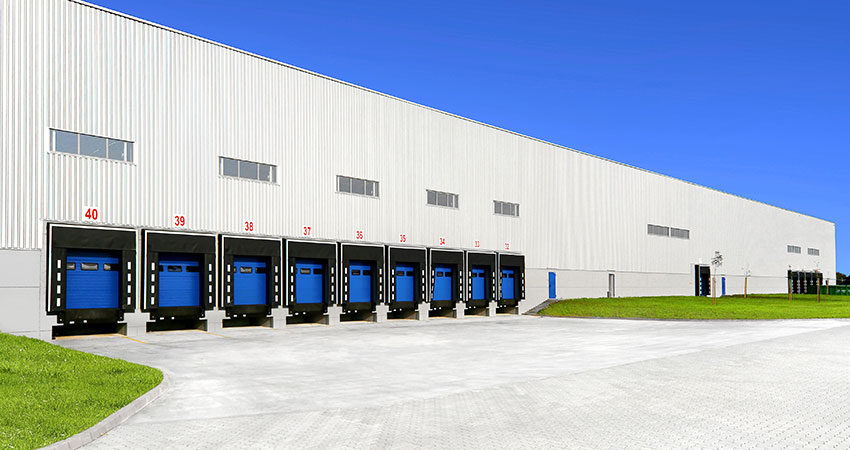Without a doubt, Amazon is king of multiple ecommerce fulfillment center processing and shipping. Amazon is a threat to many ecommerce businesses in terms of product cost, shipping cost and speed to deliver orders. Amazon’s sales and fulfillment center growth is not going to subside anytime soon. Nor will UPS and FedEx rate hikes cease.
A multi-FC strategy isn’t right for every company because of the added expenses, inventory required and managing a second remote center. Coming to the right decision for your company takes detailed assessment. Here are 11 factors to consider in the process.
Identify Strategic Objectives
What is your current delivery scenario in terms of cost and time to customer? How do you want to see improvement? For example, if management’s objective is to be one day ground from 95% of your customers, analyze your existing shipping data to determine how many locations will get you there.
Building Requirements
To determine your future building requirements, these 15 considerations will help in the selection process. Use a commercial real estate broker that has a subscription to one of the national data bases of all existing buildings and build to suit sites in the markets.
Staffing and Labor Cost Study
We use the Bureau of Labor Statistics’ (BLS) comprehensive labor and employment data to aid in projecting payroll for proposed sites and organizations. Then we do the “boots on the ground” research needed for a market, tour and visit other warehouse operators to understand the potential marketplace. BLS data can only give part of the info needed.
Inbound Freight from Vendors
Evaluate how potential new site locations and your existing ecommerce fulfillment center will affect this expense. Would receiving in more than one location decrease costs as they’re closer to the entry point into your supply chain? To analyze this, you need historical inbound freight costs for a year; the originating city or port of entry; and the number of shipments from all vendors and the weight and expense of each. From here you can analyze which locations have the biggest impact on this expense.
Outbound Shipping Costs
Evaluate how potential new site locations and existing location(s) will impact this expense. The historical data required is the detailed last 12 months or last calendar year of each shipment, the weight and shipping costs, carrier service level and the carrier zone this resulted in. For the potential new locations, determine how the cost, zone shipped and transit time are positively impacted.
Inventory Required
The increase in inventory required is a major consideration. Will all products be replicated in all location? Will best sellers be in all centers and slow or average sellers only in one ecommerce fulfillment center? Would ship-alone, heavy products be in one center only?
Capital Expenses and One-Time Costs
These expenses will vary by potential sites, including the facility’s build-out expenses, installation of racking, material handling equipment (MHE) and conveyance equipment and transportation of product.
Inventory Increase
How much additional inventory is required to fill customer orders from multiple centers? Our experience is that a second fulfillment center adds 30% or more inventory dollars compared to a single center.
Start-Up and Lost Productivity
There is always a start-up period with lower productivity with the new facility, employees, systems and MHE use. Often there is higher-than-expected employee turnover. Plan the ramp up realistically over the initial months – six months or longer for some facilities.
System Functionality Required
Do your systems have the needed functionality to control inventory and fill orders from multiple locations? Are there business rules to assign customers to a particular ecommerce fulfillment center, and to allocate inventory based on orders? Can business rules about back ordered items be set up to not fill from two locations? Can your merchandise planning and purchasing systems record sales by location?
Other Factors
These include business incentives, state and county sales taxes and inventory tax if applicable.
Consider third-party logistics as an option
If adding employees and spending capital to open additional fulfillment centers is not cost justifiable, consider using a 3PL partner. This will have dramatically lower start-up costs and be faster to implement. Selection and standup can be done in six months vs. 12 months for leasing an existing building, or more than two years for a new facility (site selection and build to suit). This prior post has more information on this consideration.
Presenting results
This type of study generates a lot of detail and supporting data. To present the key findings, we recommend summarizing key analyses:
High-level comparative analysis of options considered: Prepare a side-by-side comparison of the pros/cons of the various options on as few spreadsheets tabs as possible. Examples include 3PL vs. an owned or leased center, and the merchandise strategies you’re recommending.
High-level comparative analysis of site locations: As above, prepare a side-by-side comparison of the best sites. Show the increase or decrease of inbound and outbound freight; labor market viability and employment; staffing salaries, hourly wages and benefits; triple net occupancy costs; facility costs for build out, racking, conveyance and systems; and the freight cost to move inventory.
Risk analysis of options and locations considered: Evaluate all the risks by strategic option for each location. Include things like wage rate and sales tax differences, and whether it’s located in a right-to-work state. Estimate the potential loss and probability of each risk. Also consider the possibility of delays in construction or leasing, unplanned expenses and excessive employee turnover.
For many companies, having more than one ecommerce fulfillment center or even multiple locations – either internally managed or through 3PL partners – is the best long-term strategy for controlling shipping costs and shortening delivery time to customer.
Brian Barry is President of F. Curtis Barry & Company

